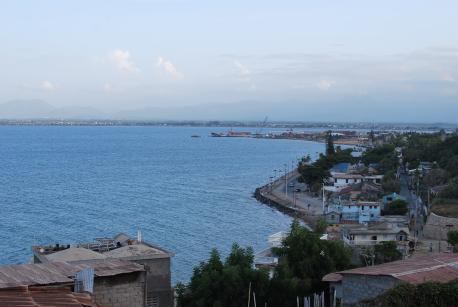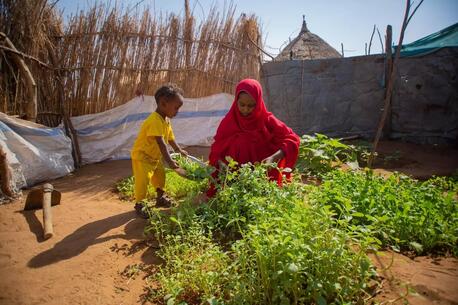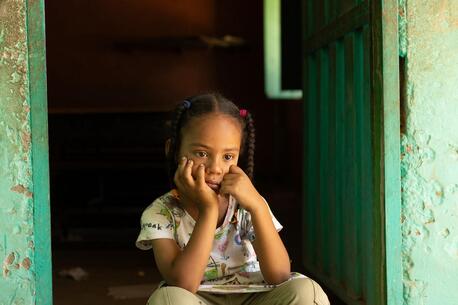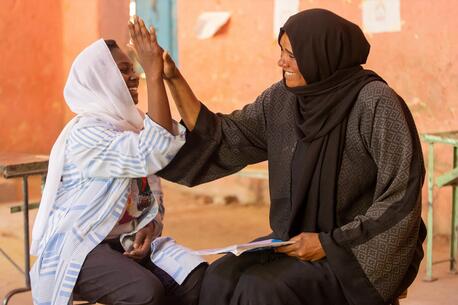
International Day of Remembrance of the Slave Trade and its Abolition
As we reflect on August 23rd's significance to the country of Haiti and it being the International Day of Remembrance of the Slave Trade and its Abolition, we should give ourselves some time to reflect on how far the United States has come in dealing with slavery, human trafficking, and exploitation.
This blog is written by Edgar Cruz.
In 1998, UNESCO (The United Nation’s Educational, Scientific and Cultural Organization) proclaimed August 23 as the International Day for the Remembrance of the Slave Trade and its Abolition, to reflect on the consequences of slavery. On August 23rd not only do we remember the slavery, but it is also a time to address modern-day exploitation and human trafficking. The two terms –slavery and human trafficking– are sometimes confused and while it is important to reflect on the former, it is crucial to understand the definition of human trafficking so that we can tackle it today.
In the conversation revolving around human trafficking, the word “slavery” is often mentioned. Why? Both terms deal with economic engines that thrive on the selling and buying of people. And, both terms deal with the continued disenfranchisement and exploitation of targeted populations.
While there are some overlaps between these two terms but the distinction between the two is important. Slavery deals with legality– the state of being owned by someone else, being property of someone else. Formal slavery has been outlawed in the United States since 1865, and in 1948, the United Nations General Assembly adopted the Universal Declaration of Human Rights, including the article that states, “No one shall be held in slavery or servitude; slavery and the slave trade shall be prohibited in all their forms.”
Human trafficking deals with the act, means, and purpose of exploitation. Human trafficking, as defined by the Trafficking Victims Protection Act (2000) passed in the United States, and backed by Palermo Protocol, states that “trafficking in persons shall mean the recruitment, transportation, transfer, harboring or receipt of persons, by means of the threat or use of force or other forms of coercion, of abduction, of fraud, of deception, of the abuse of power or of a position of vulnerability or of the giving or receiving of payments or benefits to achieve the consent of a person having control over another person, for the purpose of exploitation.”
Slavery dealt with the same form of exploitation, but at the time was legitimized by the law that defined the enslaved person as property. Under the Universal Declaration of Human Rights, every person is afforded rights and protection from exploitation. Therefore the recognition of human rights criminalizes the act of trafficker. Human trafficking disproportionately affects the most marginalized, vulnerable and oppressed. Foreign nationals, young women of color, trans-youth, intersex-youth, youth that have experienced sexual abuse, runaway, and homeless populations, and people living in poverty are at a high risk of being trafficked across every bordered country.
Putting syntax and legal definitions aside, human trafficking and slavery have overlaps and intersections – both deal with power, financial control, our global economy and ultimately they are both about exploitation.
The precedent of abolishing slavery has paved the way for human trafficking to be criminalized.
Call to Action: Join the Anti-Trafficking Movement
1. Talk about it. Spread the word and talk about these differences with someone. Slavery, the legal system, is a thing of the past. Exploitation is still existent and will continue unless you educate yourself, speak up and speak out.
2. Encourage your communities to recognize August 23rd as a day of observance – The International Day of Remembrance of the Slave Trade and its Abolition – the slave revolt in Saint-Domingue, which inspired others to fight for their freedom. If you are a student, you can encourage your teacher or professor to teach a lesson of the intersections of human trafficking and slavery. Or host a film screening of Not My Life at your school or college campus, to learn more about the complex issue of human trafficking.
3. Reach out to the End Trafficking Project Team! We can brainstorm together to find what makes sense for you. Contact endtrafficking@unicefusa.org for more details.


